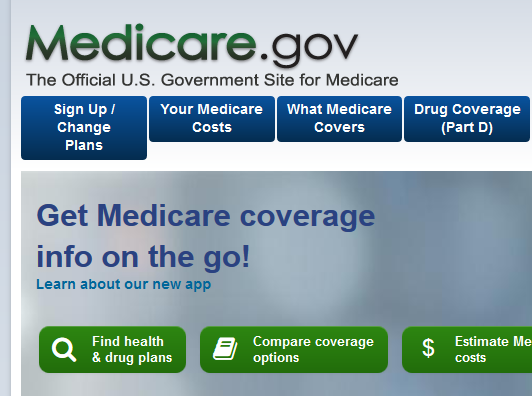Payroll
Medicare 101 for Accountants: Essential Information for CPAs Advising Retiree Clients
This article provides a comprehensive guide to Medicare basics, equipping CPAs with the knowledge needed to help their clients navigate this essential component of retirement planning.
Sep. 14, 2024

By Al Kushner.
As financial advisors, certified public accountants often serve as trusted consultants for clients approaching retirement. One critical aspect of retirement planning is healthcare coverage, specifically understanding Medicare. This article provides a comprehensive guide to Medicare basics, equipping CPAs with the knowledge needed to help their clients navigate this essential component of retirement planning.
Understanding Medicare Eligibility
Medicare is a federal health insurance program primarily for individuals aged 65 and older. However, it also covers certain younger individuals with disabilities and those with End-Stage Renal Disease (ESRD).
Eligibility Criteria:
Age 65 or Older: Most U.S. citizens or permanent residents become eligible for Medicare at age 65.
Under 65: Individuals under 65 can qualify if they have been receiving Social Security Disability Insurance (SSDI) for at least 24 months or have ESRD or Amyotrophic Lateral Sclerosis (ALS).
Enrollment Periods
Understanding the various enrollment periods is crucial to avoid penalties and ensure timely coverage.
1. Initial Enrollment Period (IEP):
When: Begins three months before turning 65, includes the birthday month, and ends three months after.
Importance: It’s the first opportunity to enroll in Medicare Parts A and B without penalty.
2. General Enrollment Period (GEP):
When: January 1 to March 31 each year.
Importance: For those who missed their IEP, but late enrollment penalties may apply.
3. Special Enrollment Period (SEP):
When: Varies based on specific circumstances (e.g., losing employer coverage).
Importance: Allows enrollment without penalty if meeting specific criteria, such as having employer health coverage past age 65.
4. Annual Election Period (AEP):
When: October 15 to December 7 each year.
Importance: Beneficiaries can change their Medicare Advantage (Part C) and Prescription Drug Plans (Part D).
The Four Parts of Medicare
Medicare consists of four main parts, each offering different types of coverage:
1. Part A (Hospital Insurance):
Covers: Inpatient hospital stays, skilled nursing facility care, hospice, and some home health care.
Cost: Usually premium-free if the individual or their spouse paid Medicare taxes while working.
2. Part B (Medical Insurance):
Covers: Doctors’ services, outpatient care, preventive services, and some home health care.
Cost: Monthly premium, which may vary based on income, plus an annual deductible and coinsurance.
3. Part C (Medicare Advantage):
Description: An alternative to Original Medicare (Parts A and B) offered by private companies approved by Medicare.
Covers: Includes Part A, Part B, and often Part D (prescription drugs), along with additional benefits like vision, dental, and wellness programs.
Cost: Varies; often includes an additional premium on top of Part B.
4. Part D (Prescription Drug Coverage):
Covers: Helps cover the cost of prescription drugs.
Cost: Monthly premium, which varies by plan, plus a deductible and copayments/coinsurance.
Practical Tips for CPAs
1. Encourage Early Planning:
Advise clients to start learning about Medicare and assessing their future healthcare needs well before they turn 65. Early planning can prevent rushed decisions and potential penalties.
2. Discuss Employer Coverage:
Determine if the client has employer health coverage that continues past age 65. This can influence when they should enroll in Medicare to avoid unnecessary costs.
3. Evaluate Individual Needs:
Each client’s health needs and financial situation are unique. Help them compare Original Medicare and Medicare Advantage plans, considering factors like coverage benefits, network restrictions, and out-of-pocket costs.
4. Keep Track of Deadlines:
Emphasize the importance of adhering to enrollment periods to avoid late penalties and gaps in coverage. Setting reminders for key dates can be beneficial.
5. Monitor Income-Related Adjustments:
Higher-income clients may pay more for Part B and Part D premiums due to an Income-Related Monthly Adjustment Amount (IRMAA). These adjustments are based on reported income two years prior.
====
Medicare is a complex system, but with a solid understanding of its basics, CPAs can provide invaluable assistance to clients navigating their healthcare options as they approach retirement. By staying informed about eligibility, enrollment periods, and the different parts of Medicare, CPAs can help their clients make informed decisions that ensure comprehensive healthcare coverage in their retirement years. CPAs are encouraged to visit the official Medicare website at www.medicare.gov for further resources and detailed guides.
Al Kushner is a leading authority in the medical insurance domain, renowned for his extensive experience of nearly four decades focused on Medicare. His comprehensive understanding covers the entirety of Medicare’s framework, influencing healthcare delivery, especially in situations that demand precise adherence to Medicare regulations. Leveraging his substantial practical experience, Kushner offers invaluable insights and guidance. Those seeking to fortify their practice with specialized Medicare expertise are encouraged to contact Al Kushner at 888-810-9725 9725 or email at media@virtualmedi.care for impactful advice that enhances approaches in Medicare-related matters.
